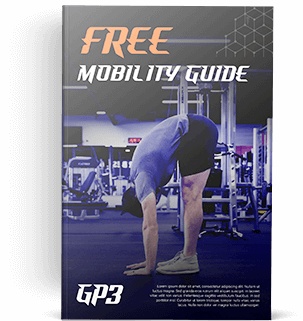Key Points:
- The belief that Americans are more divided than ever is so prevalent we take it for granted.
- However, fascinating research shows this isn’t actually the case.
- The Pareto Principle, or “80/20 Rule” can be applied to politics, explaining how a small but vocal minority is disproportionately responsible for a majority of the problems.
Estimated reading time: 6-12 minutes
Listen to this episode on Spotify!
In the past two weeks, we’ve talked about individuals who provoke a strong negative emotional response, and also pondered whether people can be inherently evil. Who fits quite nicely into both categories? Why, politicians, of course! I’m mostly joking, so today’s focus will be on politics itself, rather than politicians. And I’d like to begin with a small confession.
In the past few years, I’ve lost a great deal of my patience for politics. It seems to be one of the easiest ways for a person to form a rigid identity, which I strongly believe inevitably leads to suffering for both the individual and those with whom they interact. To that end, I find myself agreeing fairly strongly with Thomas Sowell’s quotation, “Politics is the art of making your selfish desires seem like the national interest.”
However, politics is a feature of modern existence, so we might as well look at ways to make it more palatable. That starts with understanding its biggest problems, one of which is hyper-polarization. But, how bad is it?
The Perception Gap
Many of us believe that Americans are more politically polarized than ever. This is almost so obvious that I don’t even need to cite statistics to support that claim, right? But…it’s not actually true.
Before I explain this, I will concede that recent years have seen an increase in what’s known as “negative partisanship,” a phenomenon in which people feel more compelled to vote against the “other side” rather than for “their own.” Part of why this is, and part of why many of us perceive political polarization as increasing is because we tend to be totally out of touch with what “the other side” believes. And that’s true for both major parties!
To dive deeper, we’ll examine research conducted by an organization called More in Common, which published some fascinating findings from a 2019 survey about political polarization. They surveyed 2,100 Americans, which doesn’t sound like that many, but one of the few concepts I remember from my college statistics courses is that a surprisingly low number of people make up a representative sample of a population. Also, More in Common partnered with YouGov, a research company with a strong reputation in the industry, so let’s not be too cynical and trust that their data are at least reasonably accurate.
So, what did More in Common find?
Basically, a large number of Americans who support one political party hold caricatured views of those in the other. Let’s look at some examples:
Democrats:
- They estimated only 50% of Republicans believe that, “Properly controlled immigration can be good for America.”
- In reality, over 85% of Republicans agreed with this statement.
- They estimated just 50% of Republicans believe that, “Racism still exists in America.”
- In reality, over 80% of Republicans agreed with this statement.
- They estimated only 40% of Republicans would say that, “Many Muslims are good Americans.”
- In reality, approximately 70% of Republicans agreed with this statement.
Republicans:
- They estimated about 48% of Democrats would disagree with the statement, “Most police are bad people.”
- However, about 85% of Democrats disagreed with that statement.
- They estimated just over 50% of Democrats would say, “Though I acknowledge my country’s flaws, I am proud to be an American.”
- In reality, over 80% of Democrats agreed with this statement.
- They estimated a whopping 65% of Democrats believe, “The U.S. should have completely open borders.”
- In truth, only 25% of Democrats actually felt this way.”
The point of all of this is that a relatively small percentage of people hold the most extreme views. Only 8% of liberal survey respondents fell at the far left end of the spectrum, and a mere 6% of conservative respondents were categorized at the most right-leaning pole.
And yet, we tend to think that Americans are further apart than ever when it comes to political issues. Worryingly, the survey also found that the more news media one consumes and the more politically engaged one is, the worse they performed on this estimation quiz. Now that’s scary.
“The Perception Gap” isn’t the only piece of evidence that finds less polarization than we’re led to believe.
I found More in Common by looking for another survey I read about a couple years ago. Google let me down this time and I sadly couldn’t find it to cite here, so I can only hope I’ve built up enough trust over 80+ blog posts for you to take my word on it.
Anyway, the particular survey to which I’m referring dealt with seven “hot button issues.” Abortion, gun control, immigration, gay marriage, trans rights, topics like that. Ones that really get people fired up. Respondents were asked to select the conservative position or liberal position for each topic. I don’t believe there was a “neutral” option. In keeping with the Perception Gap’s findings, less than 10% of people chose the liberal position for all seven topics, and less than 10% of people chose the conservative option for all seven topics. In reality, people are more complex and nuanced than we often give them credit for.
The distribution of extreme left and extreme right views suggests a sort of perverse political Pareto Principle. Nice alliteration, huh? But for those unfamiliar, The Pareto Principle is also known as the 80/20 rule. According to Investopedia:
The Pareto Principle, named after economist Vilfredo Pareto, specifies that 80% of consequences come from 20% of the causes, asserting an unequal relationship between inputs and outputs.
For example, in sales and marketing, the Pareto Principle states that 80% of your income will come from 20% of your customers. Or on a simpler and more personal level, perhaps you wear 20% of the clothing in your wardrobe 80% of the time.
It seems reasonable that in politics, 80% of the polarization problem could come from 20% of the people. The problem is, those people are loud, which makes us believe ideological divisions are more extreme than they truly are.
And I’ve got a quick anecdote that supports this.
A couple of months ago, I went on a camping trip in a northern portion of Arizona. One of my good friends who leans leftward on the political spectrum bonded with a couple at our campsite who confided in me that they had left California due to what they perceived as “liberal overreach” by the state’s Democratic governor.
In addition to this, at the risk of engaging in stereotyping, I gleaned from camo outfits, Bass Pro Shop hats, and “Licensed Firearm Instructor” t-shirts that a number of people present weren’t likely to identify as politically left of center. But, political differences were never remotely an issue!
My friend spent a significant amount of time with someone wearing the above-described outfit excitedly nerding out about the intricate details of this gentleman’s RV, and the same couple bemoaning California politics bent over backwards to help us when my friend’s brand new generator turned out to be a lemon.
Everyone at the campsite was perfectly pleasant towards each other, helpful, kind, and good-natured. Perhaps I’m being cynical here, but I had the somewhat sad sense that all it would have taken to ruin this would have been someone asking, “So, do you think Trump or Biden will win the election next year?” Hopefully, I’m wrong, but here’s the point. I knew for a fact that the couple we met and my friend held different political views. And yet, that was zero barrier to them bonding and offering each other a helping hand when it was needed.
Call me naive, but I’d like to think MOST Americans are like this.
When tribal political identities stay in the background, people are generally decent, helpful, and kind. When these identities are triggered, we can be tempted to act with less civility. Often because we’ve been led to believe that the loud minority represents the views of everyone on the “other side.” All of this viciously combines to convince us that things are worse than they are. I know I’ve certainly believed this at times, and I’m far from alone here.
I have a different friend who’s heavily involved in local politics, and he told me about a recent time he made an offhand remark to a business partner a few decades older. “Americans are obviously more divided than ever…” my friend started to say. His colleague laughed and responded, “Not even close. You weren’t alive during the Vietnam War. It was way worse back then.”
So, where do we go from here?
As I said, I’ve become convinced that the majority of people agree on much more than they disagree. In fact, the “Perception Gap” survey classified 67% percent of people (with varying degrees of leaning left or right) as the “exhausted majority.” We don’t really hate each other; it’s only when our primal in-group vs. outgroup buttons are pushed through the lens of political loyalty that we may start to view others as ignorant, flawed, and even dangerous.
However, a key problem is, many people who do hold extreme views are too loud and too powerful. With that in mind, next week, we’ll talk about what I believe to be an incredibly simple solution (at least in theory) that would go a long way towards fixing the system that so many of us find exhausting, frustrating, and incapable of helping the very people it’s supposed to serve, no matter which party has power.
Before you go, I’d love to hear from you. Were you surprised by the results of the Perception Gap survey? Do you think it’s likely that the 80/20 Rule can help explain the perception that political polarization is worsening? Why or why not? Reply to this email and let me know!

